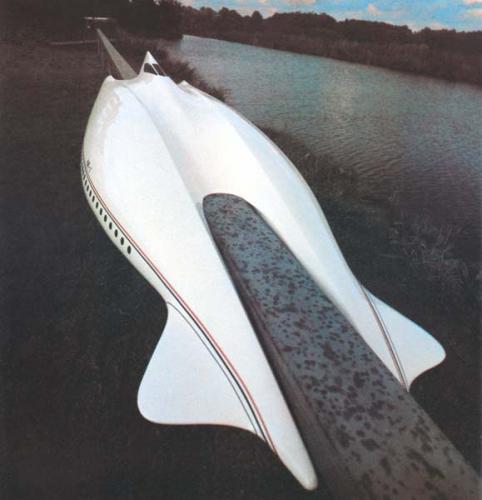
1978. HM-1. Wind tunnel model for a magnetic levitation train. Fin-shaped steering gear produces the requisite downforce. In 1974 engineers at Thyssen Henschel in Kassel began development work on the long stator magnetic propulsion technology that was later to be a success.







coooooooooooooool
This thing just screams ‘streamlined’ to me. It’s beautiful
I’d be worried about the amount of rail/track/area that it takes to turn. Does it just go in straight lines? How does it navigate hills? That seems like it might be a bit easier than turns. But I still would be hesitant to put it on long sections of track. Cool idea, and it does look slick tho.
@schulzbrainr
I totally didn’t think of turns, damn. Maybe it has a flexible body?
why should it turn? just make straight rails. around the world kk.
ontopic : its all about zero-friction, so i doubt its turning capabilities are based on the supposed flexible body grinding into the side of the rails 🙂
Well, I’m saying if it isn’t supposed to touch the track, how does the moving vehicle NOT touch the track when it needs to turn? The track doesn’t move with it, I would guess. Maybe I need you to give me more detail on your previous answer if you answered it in your post.
Now this thing looks cool. Streamlining at it’s aesthetic best. They could create larger rail clearance areas at the front and rear of the chassis with articulated rail followers in order for it to handle turns.
It could be done without really affecting the aerodynamics all that much. But it would effect it’s energy efficiency. There is always a tradeoff…
Or they could require a really, really, wide turning radii for the tracks…
Yeah, that’s pretty much what I was thinking, that turns would have to be start REALLY far in advance.